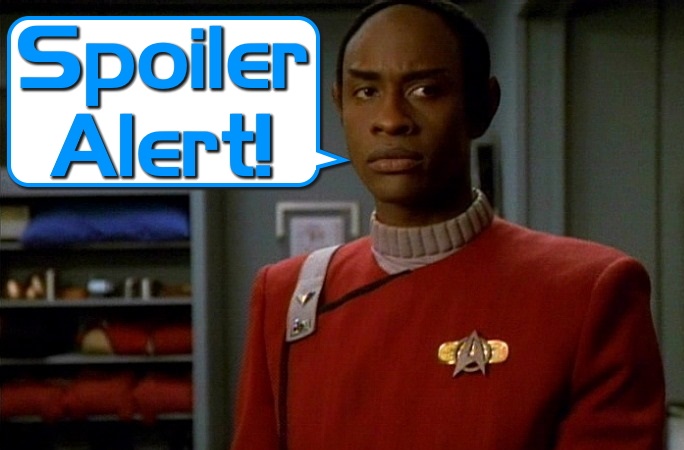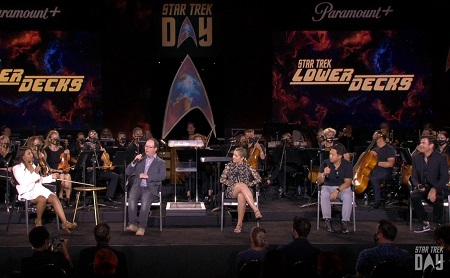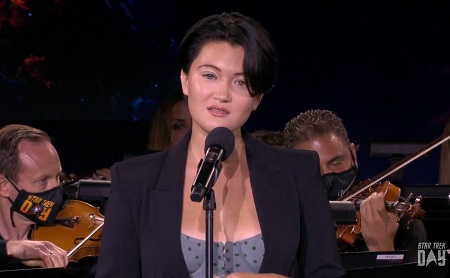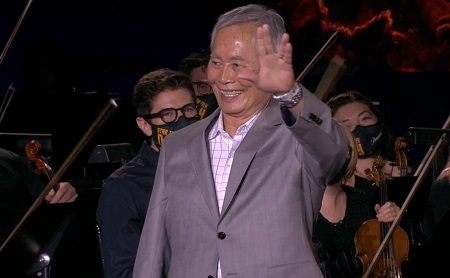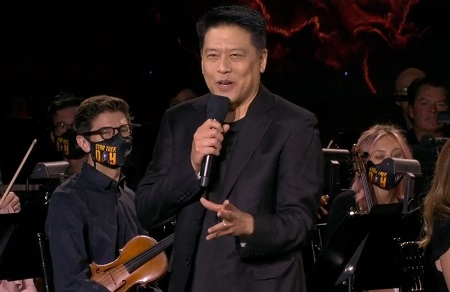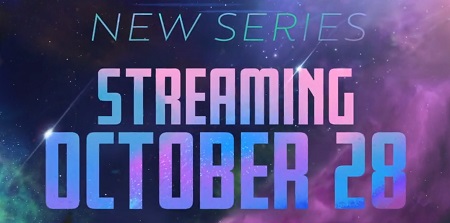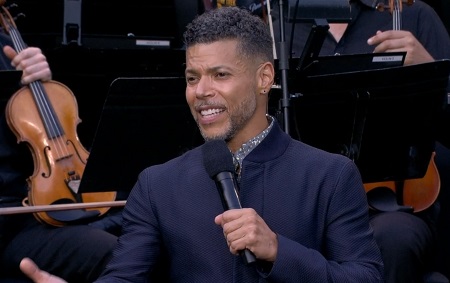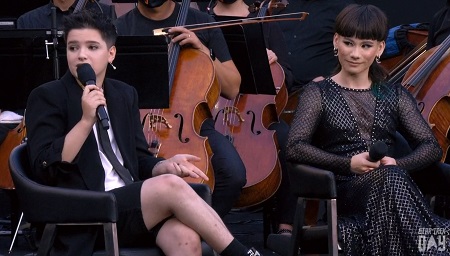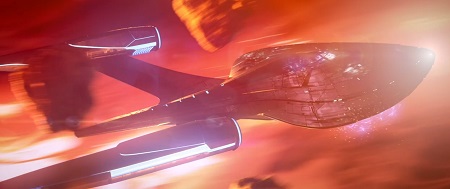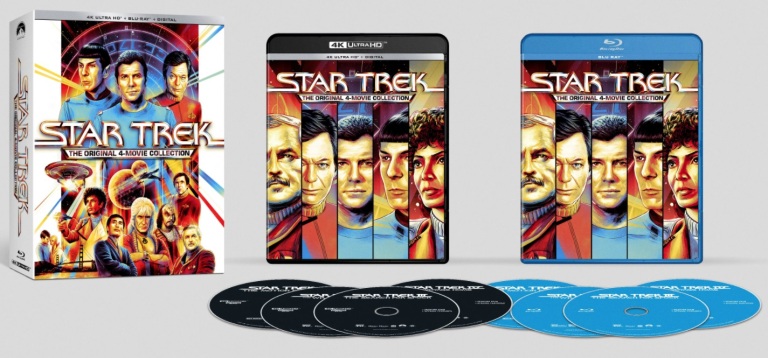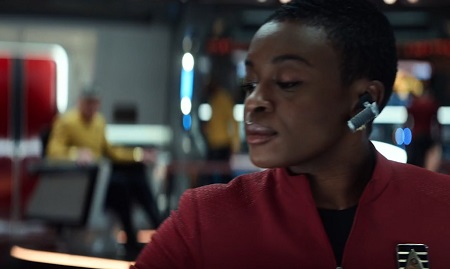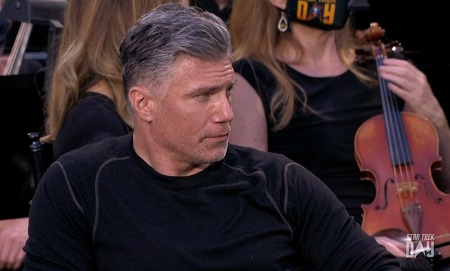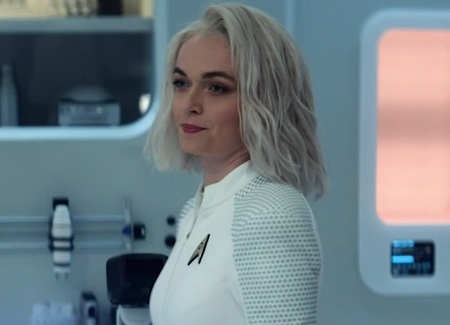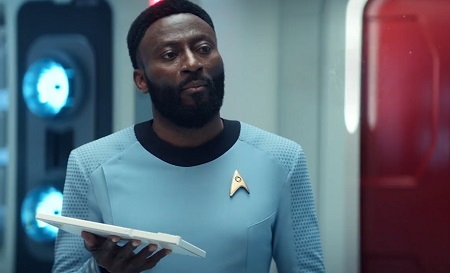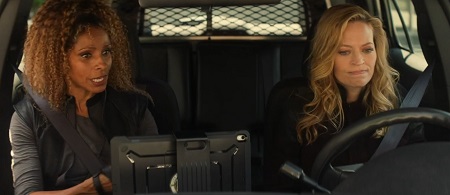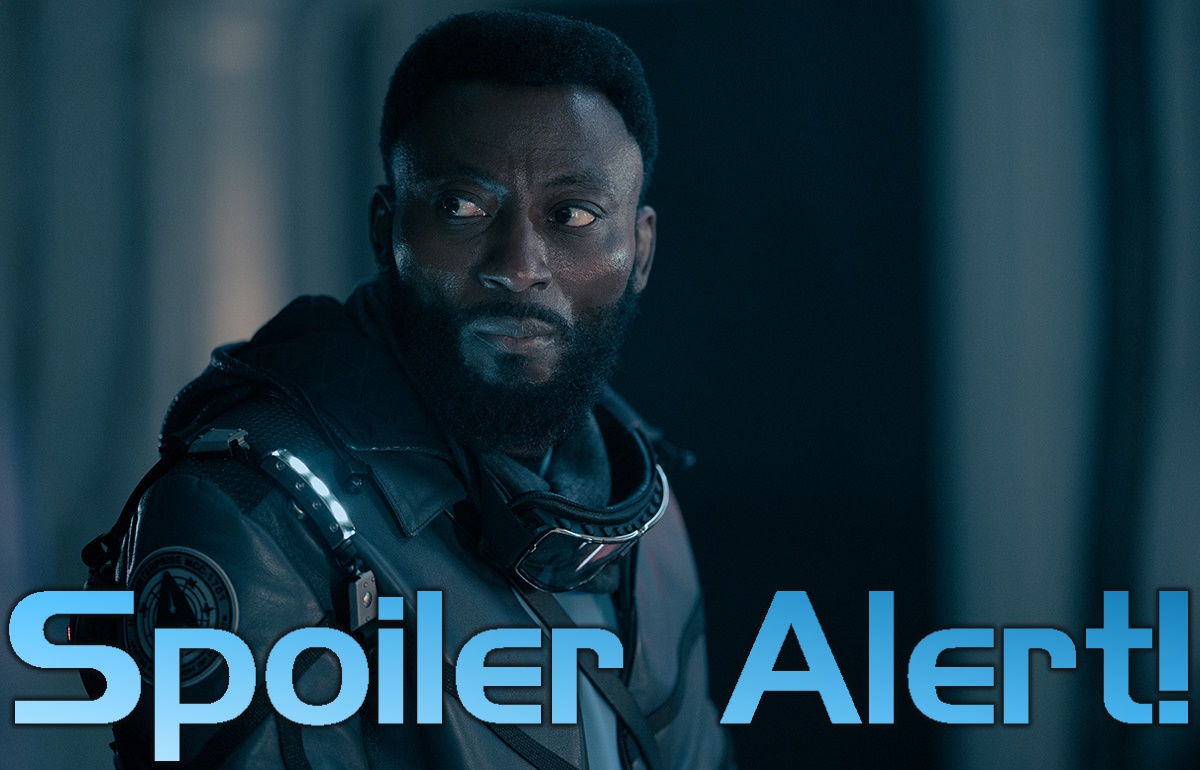
Spoiler Warning: There are spoilers ahead for Star Trek: Picard Seasons 1-3. Spoilers are also present for the following Star Trek productions: The Wrath of Khan, The Next Generation, Deep Space Nine, and Voyager.
Dominion was undeniably a fun, fast-paced, exciting episode; a thrill ride that kicked Picard’s third season into a higher gear as the plot builds to its climax. It was also an episode that shone a light in some very dark places, and did what Star Trek has always done so well: used its science-fiction setting to think about some of the issues facing us out here in the real world.
Having sat with Dominion for a couple of days, though… it isn’t actually an episode that I particularly enjoyed. It had some explosive moments of action, some engrossing moral quandaries, a sequence between two of my favourite characters from The Next Generation that was tense and emotional, and was backed up all the way by some great writing and some truly outstanding acting performances. But I didn’t actually like much of what the episode brought to the table from a narrative standpoint.
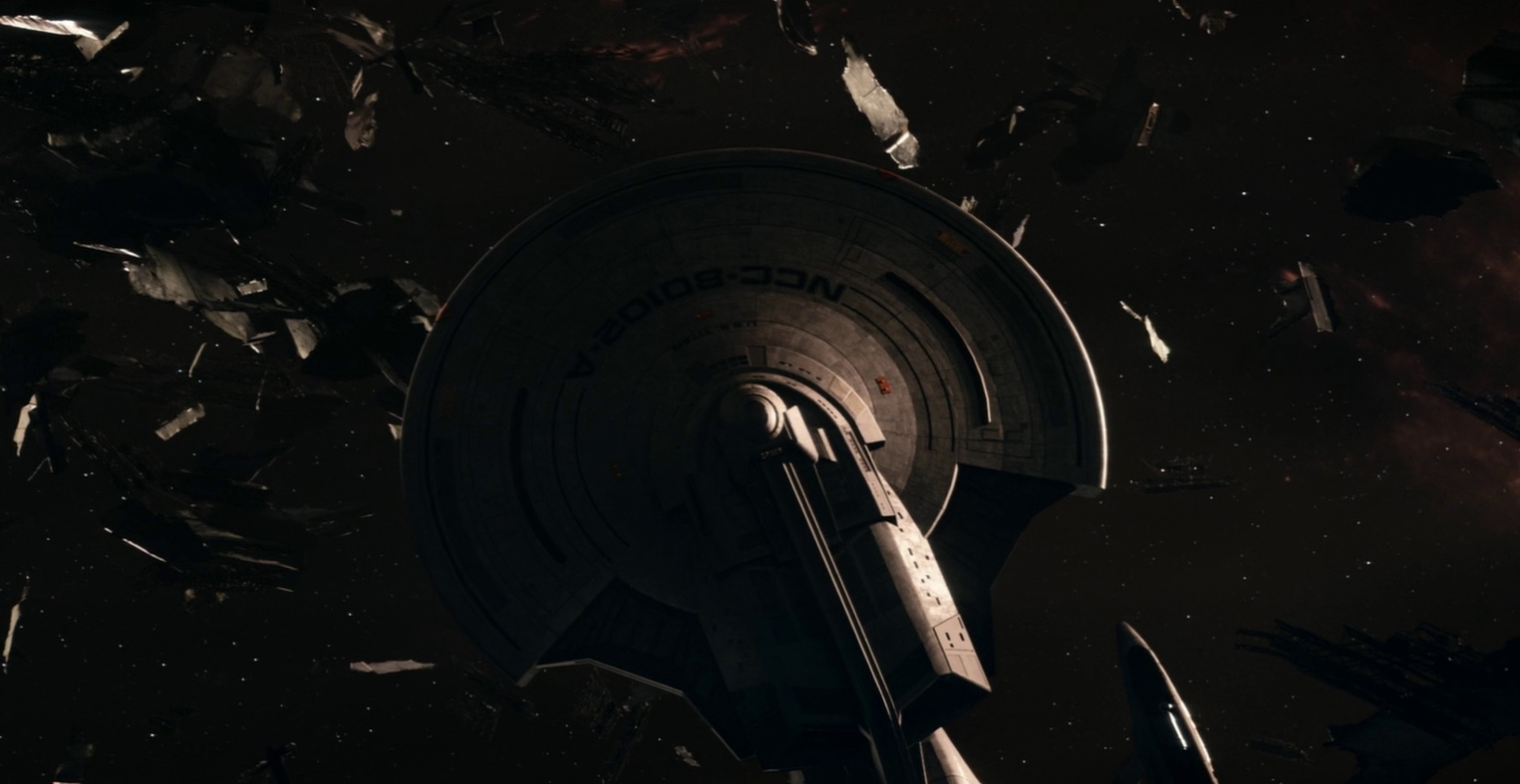
As we discussed last week, the decision to resurrect Data is not one that I would have made. There are some deceased Star Trek characters who, for one reason or another, didn’t get a proper send-off – and I argued just last year that the main characters from Seasons 1 and 2 of Picard are themselves in that category. But Data, more so than practically any other Star Trek character, had been laid to rest. His resurrection not only undid all of that, but it takes away one of the few successful moments from the finale of Season 1 – one of the very few threads keeping the ending of that season together.
And this week, I’m sorry to say that despite incredible performances from both Brent Spiner and LeVar Burton as they wrangled with Data’s apparent return… this storyline hasn’t yet justified itself. I can buy technobabble explanations in Star Trek for all manner of things – that comes with the territory in sci-fi. But you have to admit that few characters in the franchise had been killed as definitively – and as often, in different ways – as Data, so any rebirth or resurrection has a significant obstacle to overcome. I wouldn’t have even attempted it – the technobabble excuse feels like something straight out of fan-fiction – but now that it’s happened, there has to be some kind of narrative or storytelling justification for it. And there isn’t.
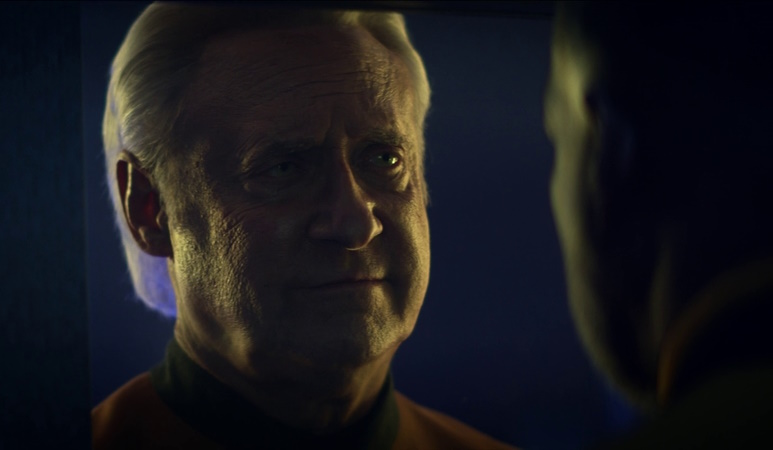
The resurrection of Data has also brought back Lore – and Lore’s intervention this week led to a storytelling trope that I’ve never enjoyed: the “heroes’ base is captured and they’re all taken prisoner” cliché. Discovery did this a couple of seasons ago, we’ve seen it in Deep Space Nine, too, and on countless other occasions in sci-fi and beyond. To me, these storylines always feel so incredibly forced, as if a particularly uncreative writer couldn’t find a better way of adding tension to a story. And that’s how Vadic’s capture of the Titan feels to me.
If the premise underlying this takeover was stronger, perhaps some of that frustration would’ve melted away. But it came about as a combination of a poorly-defined plan from Picard and Dr Crusher – a plan that was executed terribly, too – and Lore’s shenanigans. What was already a disappointingly overused trope ended up feeling even less appealing as a result.
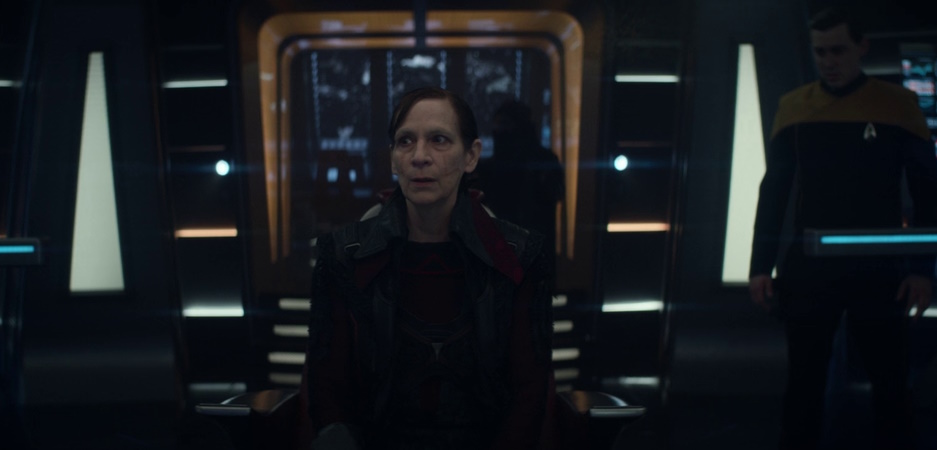
I’ve never been much of a Lore fan. The “evil twin” angle was an interesting one in some ways… but even after a mere four appearances in The Next Generation, spread out over several years… Lore had already worn out his welcome, at least for me. He’s as one-dimensional as they come, feeling akin to a Mirror Universe character in some respects, and I’ve just never found him to be of much interest. Stories in which he would attempt to take Data’s place or convince his brother to betray his friends just never stood out to me as being among The Next Generation’s best.
And I think I should be up-front about that – I have a bias against this character that’s been running for some thirty years or more! When it was teased that Lore would play a role this season, this feeling being dragged back up is precisely what I feared would happen – and so it proved in Dominion. As we’ve said in earlier episodes about Vadic: a villain needs some kind of motivation. Lore is “evil for the sake of it,” and I find that deeply unsatisfying. It was unsatisfying in The Next Generation and it was unsatisfying in Dominion, too.
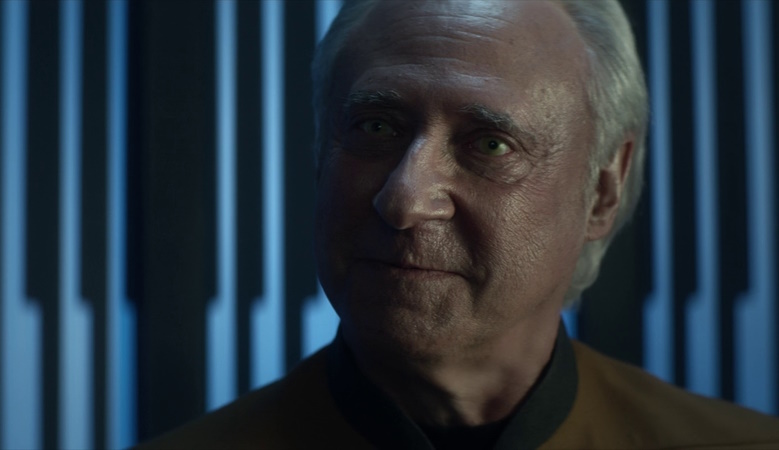
The saving grace on this side of the story should’ve been Geordi – and the wonderfully emotional performance that LeVar Burton put in as Geordi tried to reach out to his long-dead friend. Burton deserves an award for his scenes this week, as they were absolutely riveting to watch. In fact, in just two episodes, Geordi has quickly become one of the best characters in Picard, and LeVar Burton has been hitting all of the right notes consistently. But it’s a scene that just… didn’t need to happen, at least not this way.
We’ve basically had this conversation and this scene before: it came between Data and Picard at the end of Season 1. Geordi’s reunion with Data, and his attempt to reach out to him and break through Lore’s control, feels like a rehashing of those conversations between Picard and Data. In spite of what has to be one of the single best acting performances in all of modern Star Trek, these scenes just don’t add much to the story. Geordi could have expressed his sorrow at Data’s death to Picard, or to Altan Soong if the character hadn’t been unceremoniously killed off. Bringing back Data still isn’t sitting right with me.
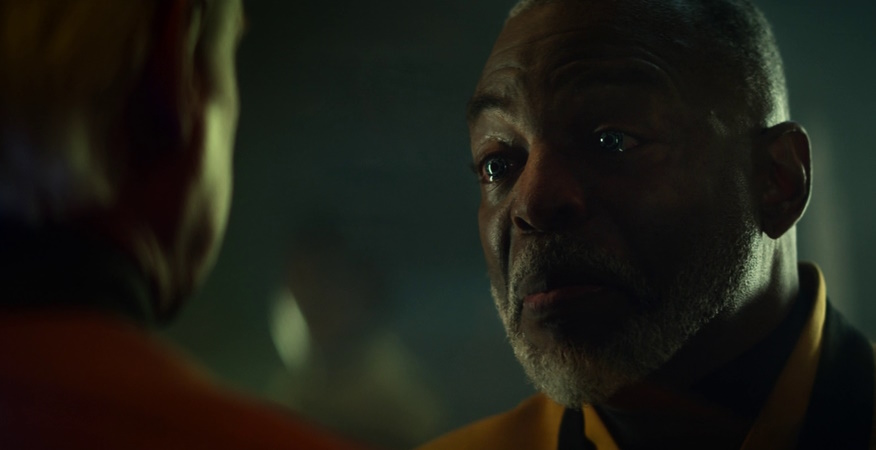
I’ve talked before about the “snowball” in media criticism: a few big or fundamental criticisms of a story get things rolling, and before you know it, the “snowball” is picking up speed, finding more and more elements of a narrative to pick on and single out for criticism. And because of how the Data-Lore resurrection has landed for me, I find myself pulling at threads on this side of the story that would have probably passed unnoticed otherwise.
For example: how was Lore able to break out and effectively seize control of the ship? The answer seems to be “because plot,” and that’s just never a very satisfying explanation – especially given the high stakes. It’s hard to see how Vadic would have been able to take control of the ship had Lore not intervened, so the main thrust of Dominion’s narrative now appears to unfold thanks to a succession of unlikely, unpredictable coincidences one after another.
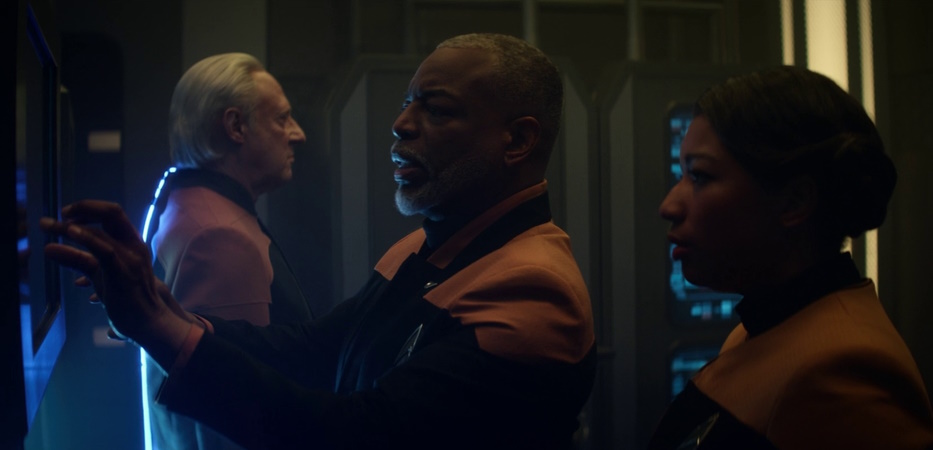
Alright, enough about my gripes about Data’s resurrection and my dislike of Lore! There’s no denying that LeVar Burton’s performance this week was outstanding, and when watching his big emotional scene with Data in particular, it was easy to put all of those concerns and criticisms out of my mind. Burton has made this older, more mature version of Geordi a real tour de force, and he’s brought far more to the table than I could have expected. If there are to be any future Star Trek projects set in this time period, they’d damn well better find a way to include Geordi – because I’m not ready to say goodbye!
It made sense for Geordi to be the one working with the Data-Lore golem, given his experiences with Data in The Next Generation, and I felt the setup for this story was handled about as well as it could’ve been. Geordi’s line that this golem is significantly more complicated than Data was also a helpful bit of exposition! Given that we’ve heard these new generation synths referred to as “flesh-and-blood” creations, maybe Dr Crusher, not Geordi, should have been examining the golem? Food for thought, at least!
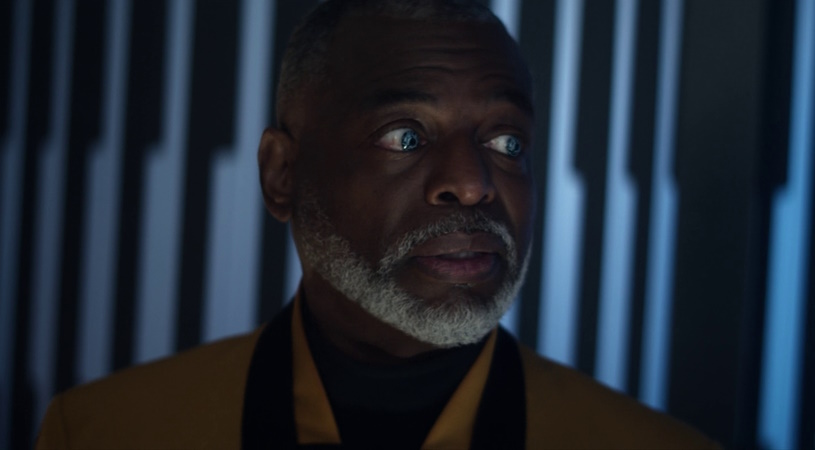
I have to admit that I was sceptical about Mica Burton – LeVar Burton’s real-life daughter – playing Geordi’s on-screen daughter Alandra. I’d been vaguely familiar with Mica Burton’s work as a presenter from Star Trek Day a couple of years ago, and her stint on a YouTube gaming channel a couple of years before that. But I felt that she was untested as an actor, having only had a couple of bit-parts before now. This felt to me like “stunt casting;” bringing an actor into the series not on merit, but due to a combination of her parentage and a desire to make headlines. A “nepo baby,” to use some contemporary slang.
And… well, I’m not wrong about that. But I’ve been pleasantly surprised to see that Mica Burton has put in two solid, perfectly creditable performances in the episodes in which she’s appeared so far. The character of Alandra La Forge, while not exactly front-and-centre, adds something to this story, and has given Geordi both an assistant and a dependent, all while managing to feel like a rounded character in her own right. We’ve started to see some great things from Sidney La Forge over the last couple of episodes – and I hope that there will be time before the season ends to give Alandra a moment in the spotlight, too.
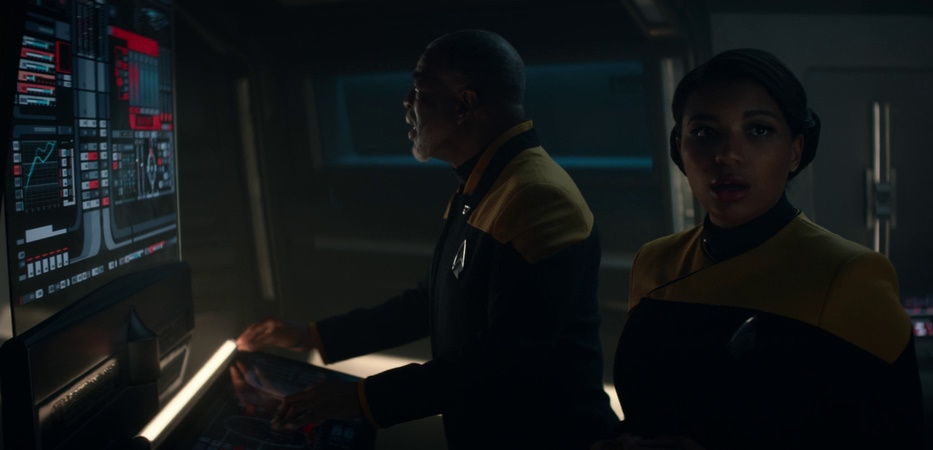
Before we get into other big stories, let’s talk briefly about another surprising character: Tuvok! Or should that be “the changeling formerly known as Tuvok,” because after what had been a great sequence between Tuvok and Seven of Nine, this character reunion was ripped apart. It was dramatic and exciting – but perhaps not how I’d have chosen to bring back an actor for what may turn out to be their final Star Trek appearance.
As a moment of pure shock value, I think the revelation that Tuvok was a changeling worked incredibly well. And I’m holding out hope that the real Tuvok might make an appearance before the end of the season – I mean, the changelings have to be keeping all of these prisoners alive somewhere, right? Maybe we should save the speculation on that for my next theory update!
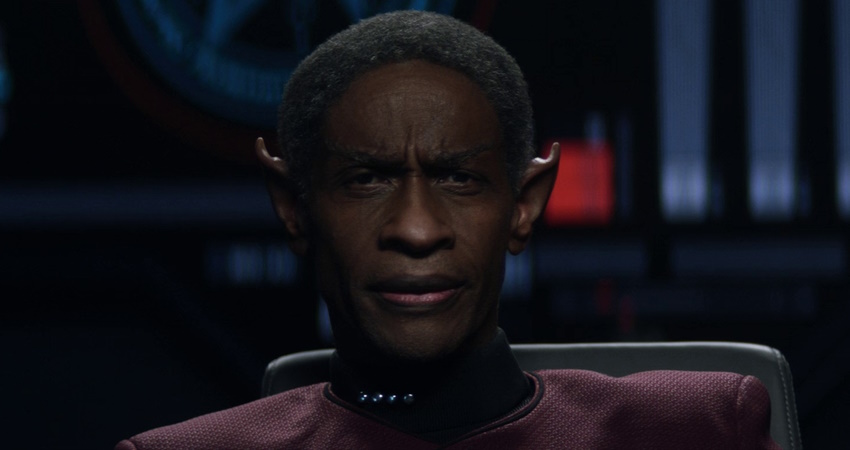
It was a bold move to bring back a character in this way, perhaps even more so than killing off the likes of Hugh and Icheb in Season 1. Tuvok was a main character for all seven seasons of Voyager, and aside from a tiny voiceless cameo in Lower Decks last year, this is the first time we’ve seen him since. Bringing back Tim Russ to play a changeling imposter feels like a very brave call – one that could’ve backfired. I think Dominion managed to make it work, though – and it was a real twist to bring back Tuvok and seem to set him up as an ally, only to rip it away mere moments later in the same sequence.
I’d love to see more from Tuvok, though – and get a genuine reunion with Seven of Nine. In a story with Worf, there’s also scope to put these two characters together. Worf and Tuvok were both security chiefs and tactical officers – but they were very different characters who had conflicting approaches to the role! Even now that Worf has entered his transcendental meditation phase, it could still be a lot of fun to put him together with Tuvok for a scene or two. A Trekkie can dream, eh?
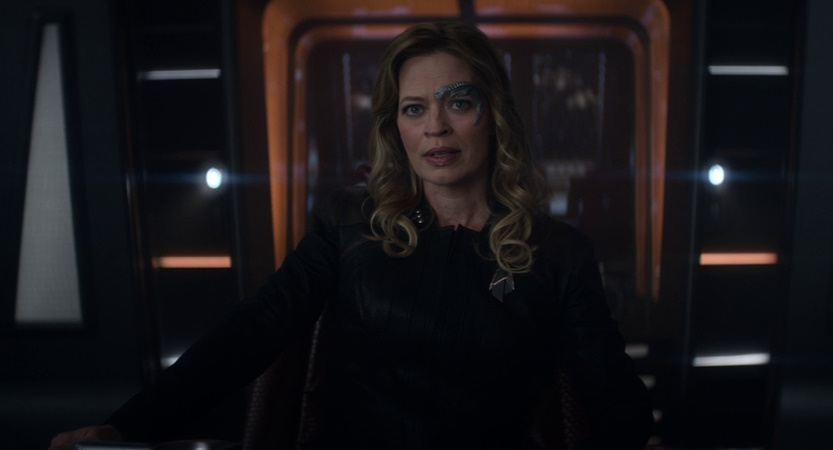
Speaking of Worf, he was absent this week – along with Raffi, Riker, and Troi. There are now only three episodes left for Deanna Troi to make any kind of impact on the story, having had only a couple of blink-and-you’ll-miss-it cameos so far, so I really hope that she’ll have something major to say and do soon.
Despite being billed as a reunion for the characters, there hasn’t yet been a single scene or sequence in which Picard and his old crew are back together – with different characters or pairs of characters largely in their own narrative boxes, not really interacting with one another. Before the season is over, I hope that there will be something for everyone to do – but perhaps more importantly, their effort to stop Vadic and the rogue changelings should feel like a collaborative effort. In Season 2, splitting up the main characters for much of the story led to a number of issues – and I sincerely hope that won’t be the case this time around. But it’s noteworthy, at this stage, that the promised reunion still hasn’t materialised, and that several main characters haven’t gotten as much to do as I’d hoped.
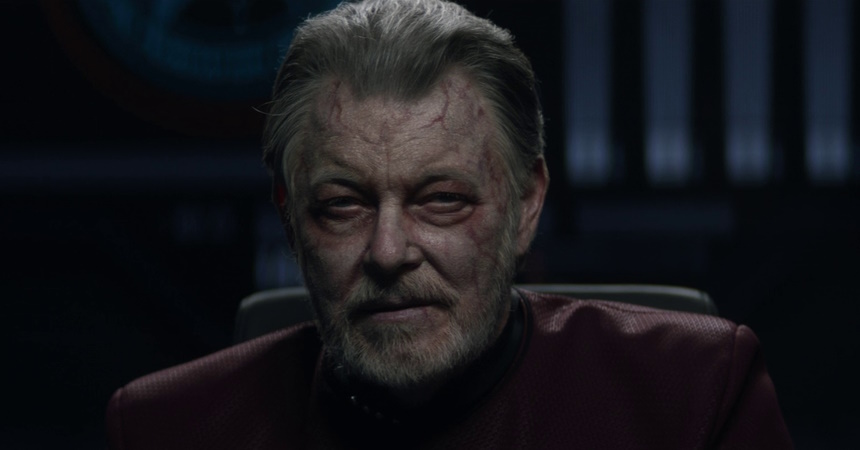
As Jack’s superpowers continue to manifest, it’s now more than obvious that there’s more going on with him than we’ve learned so far. This week, we saw him “take over” Sidney La Forge, using his newfound combat skills to defeat a nameless goon who appears to serve as Vadic’s second-in-command.
This sequence, by the way, was exceptionally well choreographed. It must have been one heck of a challenge for actors Ed Speleers and Ashlei Sharpe Chestnut (or their stunt doubles) to perform these difficult acrobatic moves in total synchronisation, but the way it came across on screen was just fantastic. Few sequences in modern Star Trek have managed to feel truly new – but this was something that the franchise hasn’t ever done before, at least not as far as I can remember! It was fantastic to watch, and while it may not have been the most intense action sequence ever brought to screen, it was incredibly clever – and it marks the beginning of a new phase in the stories of both of these characters.
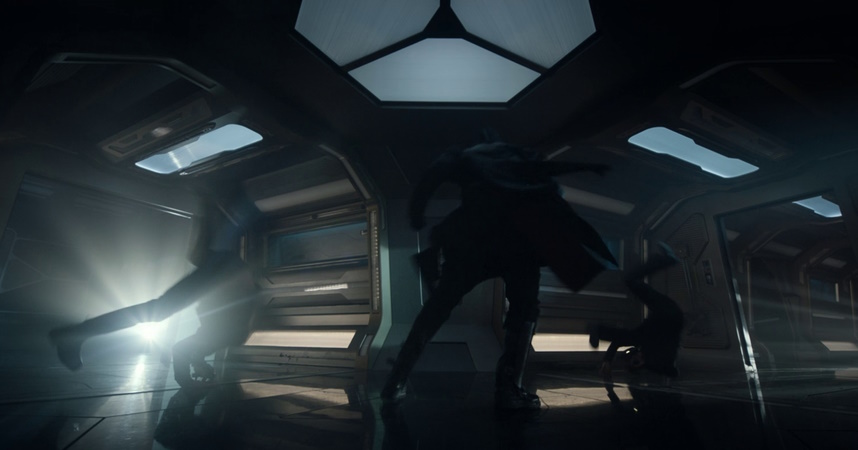
The exciting and beautifully choreographed fight was almost enough to make me forget the horrible contrivances that led to it. Almost! I stand by what I said before: Lore’s involvement in this story, messing with forcefields and transporters at precisely the right moment, was one heck of a contrivance. While we got an exciting sequence with Jack and Sidney as a result, that alone isn’t enough to justify it – and too many forced coincidences like this make for a particularly weak narrative foundation.
As the fight simmered down, one moment really stuck with me. As Sidney looked at Jack, she had a mixture of fear and shock in her eyes; that moment, as Sidney realised that she’d just been – for want of a better term – “possessed” by Jack, was exceptionally well done. Once again, Ashlei Sharpe Chestnut excelled.
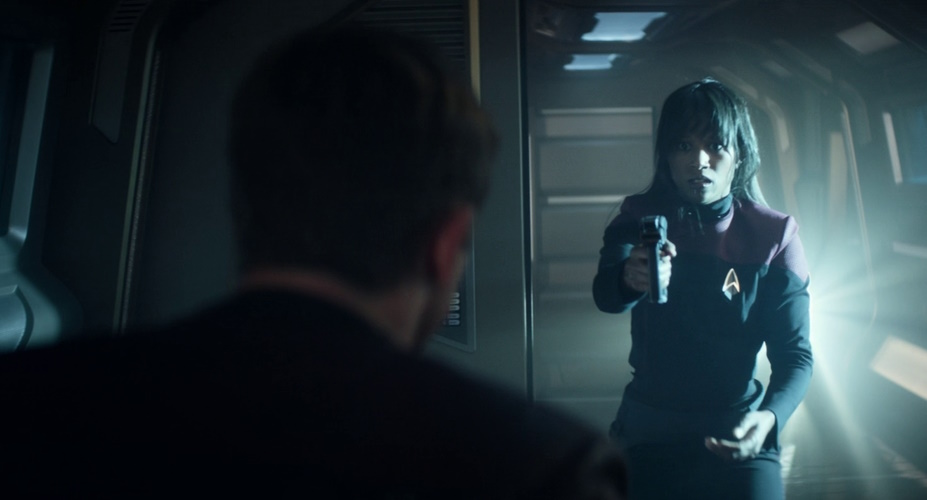
There was potential in the “let’s lure the baddie into a trap” idea that was posited by Dominion, but it quickly fell apart. The writing on this side of the story failed to set up a narratively coherent plan, and when we’re dealing with experienced officers like Picard, Seven, Dr Crusher, and even Captain Shaw, the fact that their plan was so flimsy, and fell apart so easily, doesn’t make for a satisfying presentation. There were other ways to have Vadic commandeer the Titan – if that was the episode’s required outcome – without going through this long and convoluted rigamarole.
Splitting up their forces, having poorly-armed ensigns with little combat experience literally running around the deserted hallways of the ship, and allowing the much more powerful Shrike to transport a group of changelings aboard the Titan are all indicators of a poorly-formulated – and poorly-written – plan, one that was clearly written in order to arrive at a particular outcome. Some of the specifics of this plan feel incredibly flimsy, too: where did the Titan’s crew acquire the wreck of a Vulcan ship, and how were they able to convince Vadic of its authenticity?
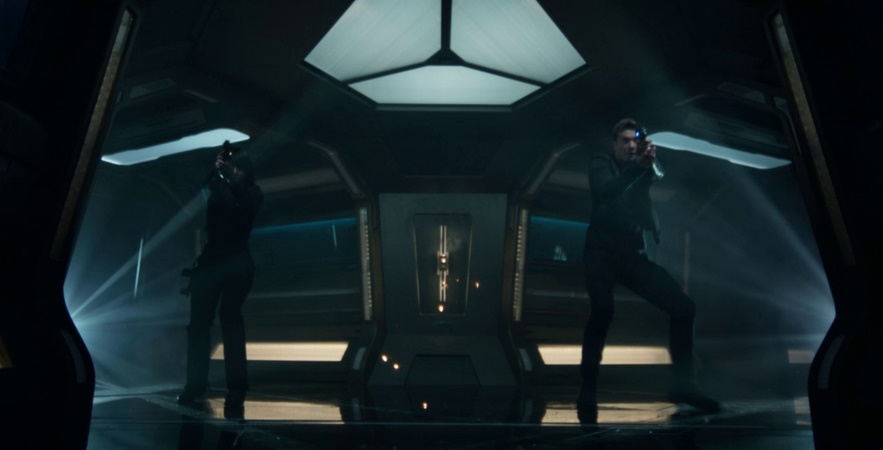
All of this, however, led to two interesting revelations about Vadic. The smaller revelation concerns the character I’ve dubbed Floaty McFloatface (Star Trek: if you don’t want fans to give silly names to your characters and factions, name them yourself). It now seems as if Floaty McFloatface may not be a changeling – or at least, not the same kind of changeling as Vadic herself. We won’t get too deep into speculation here – and I’ve been wrong about Vadic and Floaty McFloatface before – but suffice to say that there’s a complexity to their relationship that was spoken to, albeit rather briefly, this week.
I’ve been saying for weeks that we need to spend more time with Vadic, and to come to understand what’s been driving her all this time. It still seems as if Vadic’s desire to capture Jack Crusher stems from orders from Floaty McFloatface – and not, as Picard and Dr Crusher repeatedly assumed, in order to steal his DNA to make a copy of Picard. But we found out a lot more in Dominion about where Vadic came from – and it was in equal parts incredibly dark and absolutely riveting.
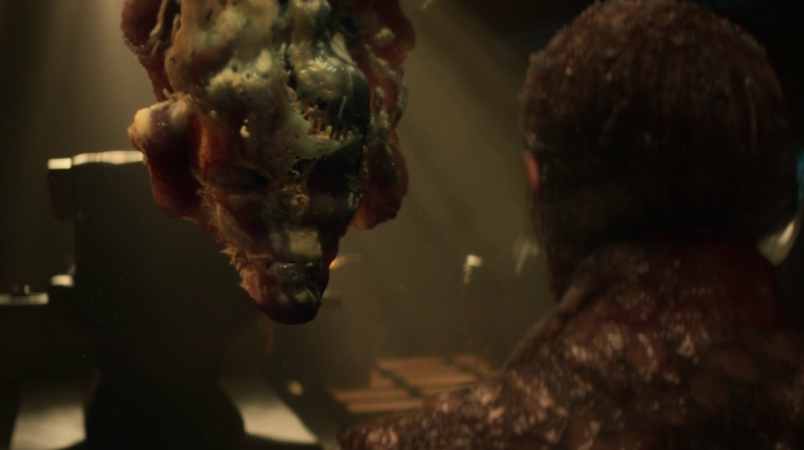
By coincidence, I’ve recently been re-watching Ken Burns’ documentary The Vietnam War, and with all the talk this week of torture and rogue military operations, I felt echoes of that conflict – as well as more recent wars in Afghanistan and Iraq. I think we can absolutely see Vadic’s story in Dominion as a cinematic response to American foreign policy over the past few decades, and a reflection of how the country is coming to terms – or failing to come to terms, in some cases – with its own recent history.
One of the lessons of Vietnam that was sadly not learned by the time of Afghanistan was an oft-repeated line that America was “creating its own enemies.” Every house burned down, every village raided, every bomb dropped… all of these things created more Viet Cong or Taliban fighters, and this is the lens through which I see Vadic’s story. By torturing and experimenting upon Vadic and the other changelings – implied to be the crew of the Shrike – Starfleet has inadvertently created another enemy for itself.
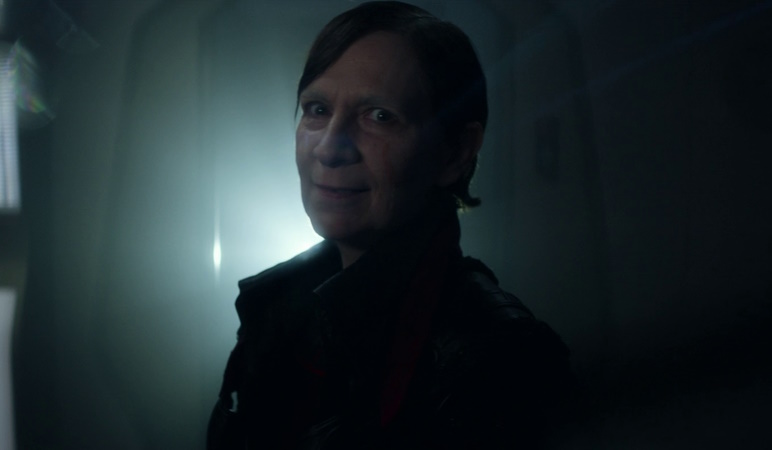
However, there are a couple of queries I have about this revelation. They aren’t yet “problems,” let alone “plot holes,” but parts of this backstory for Vadic seem to come dangerously close to contradicting what we know of the rogue changelings and their scheme from earlier episodes. Worf, for example, specifically told us that this group of changelings had departed the Great Link following a schism, implying that these rogue changelings may be those who rejected Odo’s path of peace.
Secondly, the number of changelings involved in this conspiracy feels massively inflated based on what Vadic told us. She said that she was one of ten changelings being experimented upon, yet there are clearly far more than that. We’ve already seen at least seven killed – and that doesn’t account for Vadic and her crew. While she did say that she could pass along the abilities that she had developed to other changelings, it still doesn’t seem to add up. Ro seemed to think that all of Starfleet was compromised, and that there could be changeling infiltrators aboard multiple ships. If the original group consisted of just ten members, where have all the others come from?
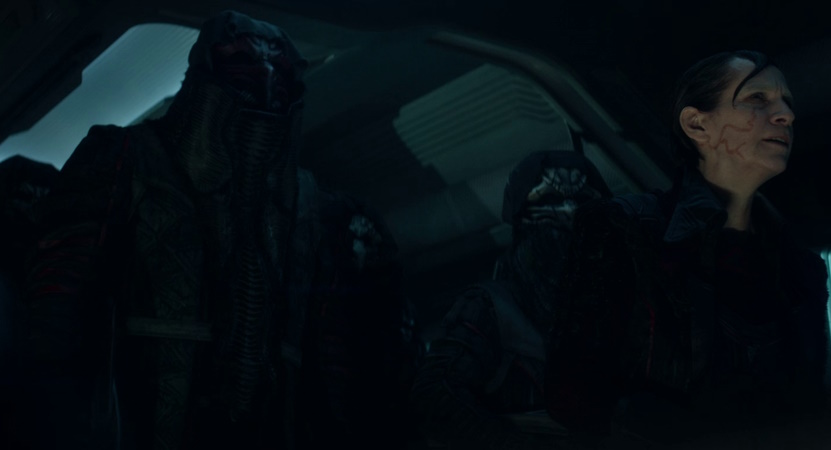
I’ve always felt that there was a conscious effort on the part of the writers and producers of Deep Space Nine to present the Dominion War as a conflict akin to the Second World War – something we see quite prominently in the show’s finale at the signing of the Treaty of Bajor. But there were definitely Vietnam War influences during Deep Space Nine’s run, too. Episodes like Change of Heart, which prominently featured a “jungle” setting, spring to mind – as does The Siege of AR-558, which was directed by Vietnam veteran Winrich Kolbe.
But there was an even darker tone to the story Vadic told us this week, something that echoed less the Afghanistan War and more the human experiments performed in concentration camps. We’ve always known that Section 31 was willing to go to extreme lengths on behalf of the Federation – even violating Federation law. But when we saw the virus they created in Deep Space Nine, we only saw its effects. This time, we saw the process – the torture that Vadic and her fellow changelings endured.
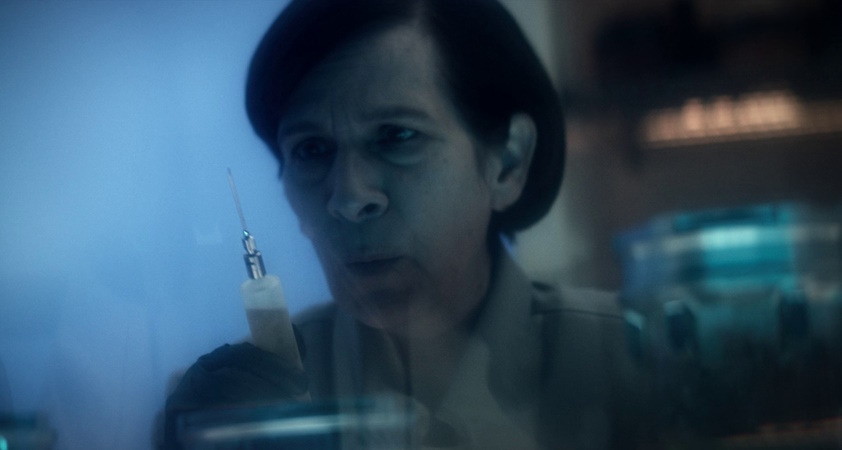
Since its emergence in Deep Space Nine more than twenty years ago, Section 31 hasn’t sat right with a lot of Trekkies – and I get that. This organisation is about as far from Gene Roddenberry’s vision of a more idealistic and enlightened humanity as it’s possible to get. But the idea that Section 31 represented has always been a fascinating one for me: that there’s someone in the background, working behind the scenes, to preserve the enlightened future that humanity has struggled to build. Section 31 sees itself as defending the Federation – even if it has to violate every single Federation principle and law in the process.
In this case, the question is perhaps a bit less interesting. It feels a lot easier to say that Vadic’s torture was wrong – because it was ultimately unnecessary. It was designed, at least according to Vadic, to allow the creation of a weapon – changelings who could bypass all the typical tests and who would report to Section 31 and Starfleet. The virus, in contrast, has always posed much more of an interesting moral question: when faced with conquest and possible extinction, should that kind of biological weapon be off the table?
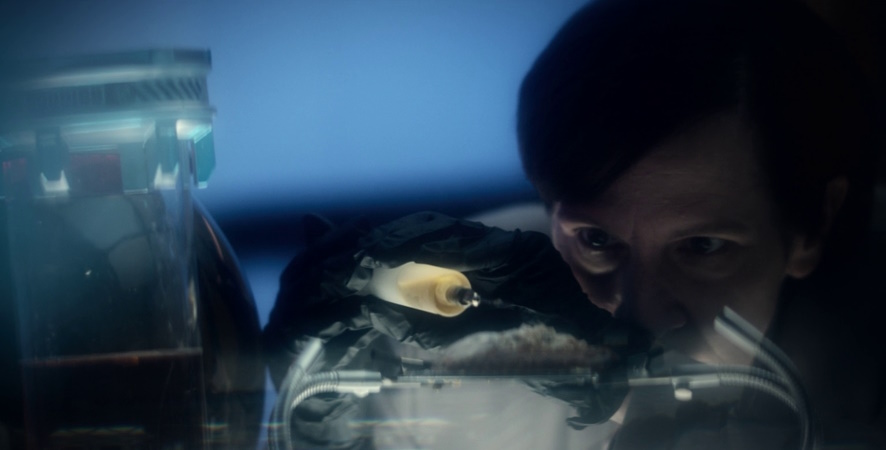
It’s easy to condemn Vadic’s torturer – and by extension, to feel a pang of sympathy for what Vadic herself has been through. There’s no denying that Vadic is a far more complex and interesting character coming out of Dominion than she was before the episode began – and that’s a good thing. We don’t need to agree with a villain or sympathise with them to understand them – but in order to really get invested in their story, we need something to give them motivation and to explain who they are. Vadic had been lacking this all season long – but we finally got the details this week, and it puts her characterisation into context.
The one disappointing thing, though, is that Vadic lacks any meaningful connection to Picard – and to anyone else on the crew, for that matter. Her torturer was a nameless Section 31 operative, she wasn’t even involved in the Dominion War as far as we can tell, and she certainly didn’t know Picard or any of the others prior to this conspiracy getting underway. They’ve definitely formed an adversarial relationship – but it comes quite late in the story. Contrast this with the likes of Khan or Gul Dukat: characters who had burning, passionate hatred for their Starfleet adversaries.

In a series called Star Trek: Picard, that could be the missing piece. In both Seasons 1 and 2, for better or worse, Picard was at the centre of the story. The Zhat Vash conspiracy disrupted Picard’s armada, and he was the one to unravel it years later. Picard’s relationship with Q led to the whole Confederation/time travel plot. And while Vadic’s determination to kidnap/capture Picard’s son gives her some kind of connection to him… I’m still not feeling the personal side of it.
I will say, though, that we’ve seen moves in that direction not just this week, but over the past several episodes. As Picard has gotten deeper into the conspiracy, his determination to do anything to stop it has grown. And there are personal stakes for him: the death of Ro, the capture of Riker, and the threat to the son he didn’t know that he had. All of those things are positive, and while we still don’t have all of the details, we have more than enough to understand Picard’s decision-making process – and his ability to cross a line that we might never have expected him to cross.
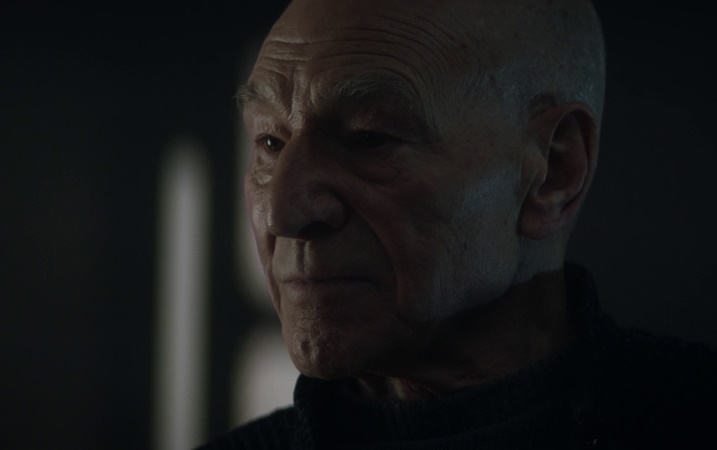
Star Trek has a fantastic collection of morality tales going all the way back to The Original Series. But for me – and I daresay for many fans of my generation, too – fewer hit harder than Deep Space Nine’s Season 6 classic In The Pale Moonlight. That episode, told through flashbacks and a frame narrative, sees Captain Sisko wrangling with breaking all of the rules in order to manipulate an outcome that he and the Federation needed. It was life-or-death, and Sisko took it upon himself to place the Federation’s survival ahead of his conscience – and ahead of following the law.
Dominion sees Picard and Dr Crusher confront the same basic moral quandary. There are laws against the killing of prisoners – yet killing Vadic (and unbeknownst to them, Floaty McFloatface too) would have thrown a spanner in the works of the conspiracy ahead of its targetted date of Frontier Day. We see them agonise over the decision, especially in light of Vadic’s backstory… but they ultimately decide to go for it.
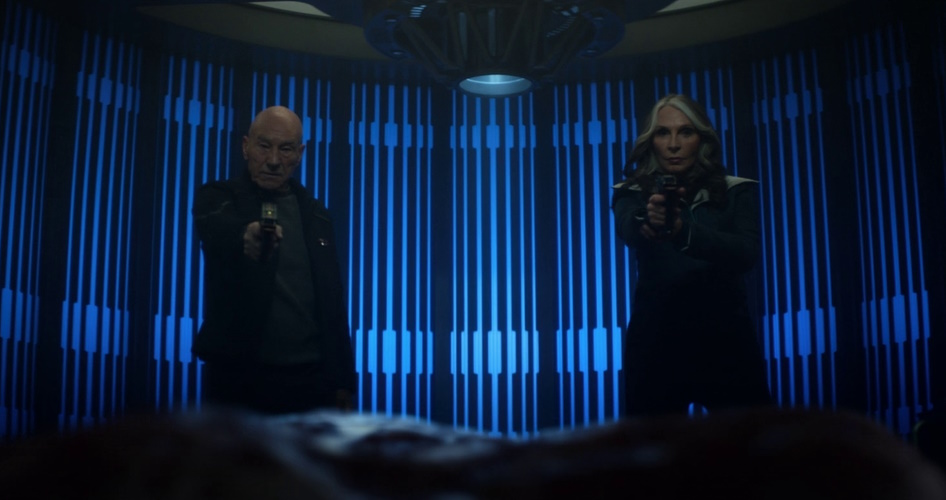
Dominion tries to present this as a choice with a time-limit – it will only be a matter of time before Vadic escapes or before someone breaks her out, so they have to decide relatively quickly. The episode also worked hard to show how conflicted Picard in particular felt about violating one of the foundational laws of war. And in the moments we got with Picard and Dr Crusher, this question of morality versus practicality worked well, and I could feel through the screen how painful it was for Picard to even have to consider a course of action like this.
However, this side of the story was split up at points by Jack and Sidney running around the hallways of the Titan, and by Geordi and Alandra working on Lore and the ship’s systems. I’m not sure that Dominion dedicated enough time to what was meant to be the key dilemma for the show’s title character – because after Vadic had explained where she came from and we’d gotten all of the other scenes and sequences with other characters… the ultimate decision seemed to be reached by Picard and Dr Crusher pretty quickly. It felt, in that moment, as if they’d already decided what they were going to do before we saw them confirm it.
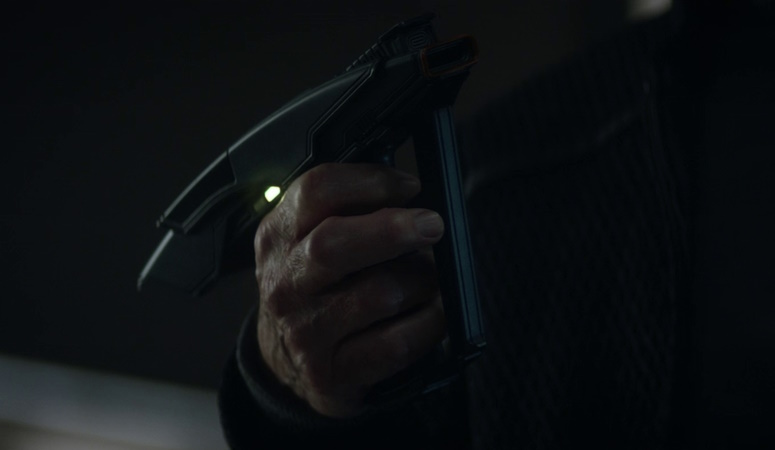
And I’d also like to point out another unenjoyable trope that came out of this side of the story. We saw in Seventeen Seconds a few weeks ago how easily Worf was able to kill a changeling in their liquid state. Seven and Jack were also able to relatively easily kill changelings in their humanoid states, too. But this week – as soon as it became convenient for the story – both Vadic and her second-in-command were able to survive multiple phaser blasts under what appeared to be similar circumstances.
There was a pathway to allow both characters to survive without doing this, and it’s really just a worn-out cliché at this point. There was some fantastic acting and choreography on both sides of the story here – but it all led to such a bland and oft-repeated outcome.
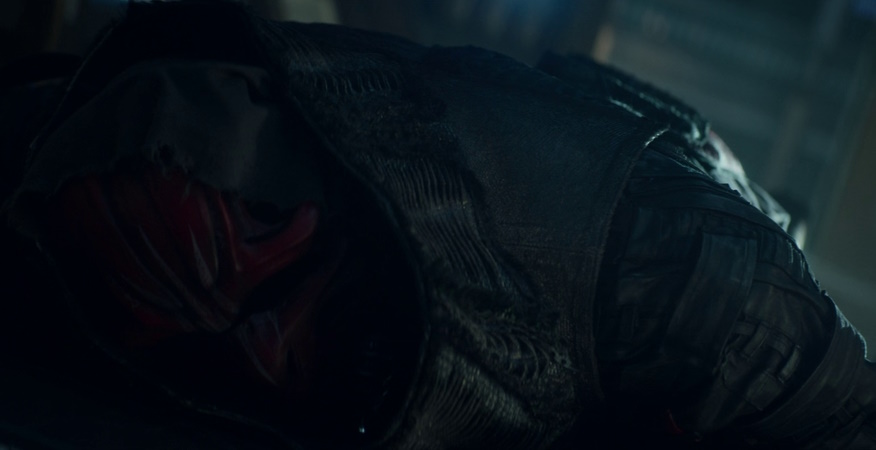
And I guess that last line kind of encapsulates my thoughts on Dominion as a whole, really. Patrick Stewart, Gates McFadden, and LeVar Burton all absolutely excelled… with the material that they had in the confines of a fairly uninspired story. This was a tense, exciting episode that moved along the plot on the Titan – while ignoring the stories of Worf, Raffi, Riker, and Troi – but that just didn’t take the season’s main narrative to a particularly exciting or original place.
There was scope to make more of Dominion, and there’s a risk, I fear, that its “captured starship” outcome will be easily undone next week, rendering much of the episode a bit… well, pointless. I’m glad we got to learn more about Vadic, and to put her conspiracy and quest into some kind of personal context for her. That was desperately needed as the season passes its three-quarter point. And there were some wonderful performances along the way, both in terms of acting and in terms of a well-choreographed sequence that felt like something new to Star Trek. But overall, I’m not thrilled with where the story went this week.
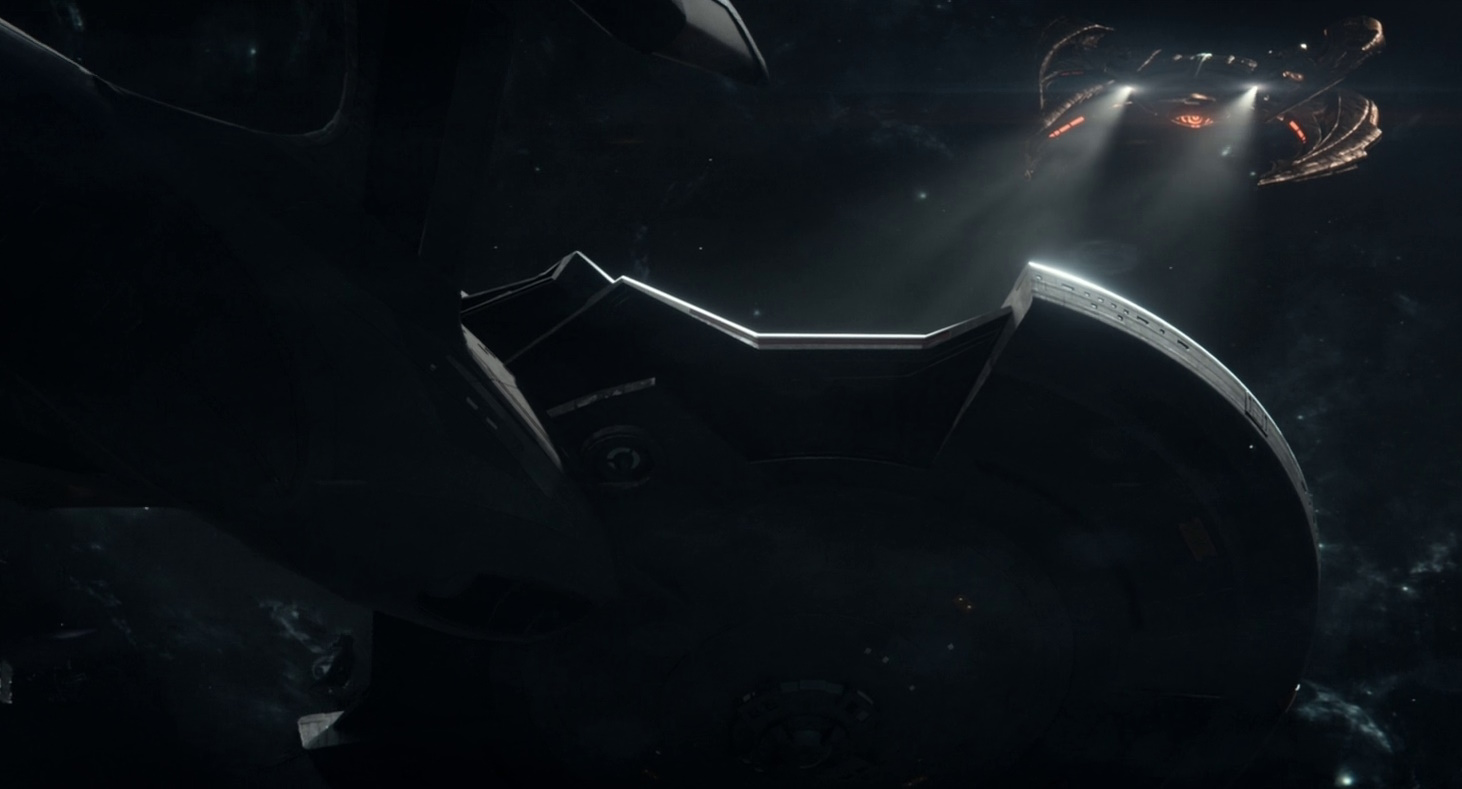
With three episodes left, there’s still plenty of time for Season 3 to recover, to deepen its mysteries, and to throw in some more twists and turns. And despite my criticisms, I don’t hate Dominion. It told the story it wanted to tell about as well as it possibly could. It can be hard to judge mid-season episodes fairly when the final destination is still unclear – and it’s to Dominion’s credit, in some respects, that the story’s endgame is still obscured through a thick narrative fog.
So I’m trying to stay positive! I’m loving the fact that we’re getting a look at some familiar faces from Star Trek’s past, that Section 31 is in play, and that it feels like Picard is finally taking a look at the broader state of the galaxy in this 25th Century time period. Dominion also put a morality question at its heart, harkening back to some of my favourite complex episodes from Star Trek’s past. There’s potential to build on what was delivered here – and maybe to take the story to a more enjoyable place next time!
A few scattered final thoughts:
- Repeated mentions of Admiral Janeway – could she appear in the season finale?
- Vadic didn’t confirm what she wanted with Picard’s corpse… but a look in her eye seemed to suggest he was wrong in his assumption.
- I’m sure that Geordi’s partner won’t appear now… but I hope it isn’t supposed to be Leah Brahms!
- Jack is wielding a 23rd Century phaser pistol – which is pretty cool!
- Tuvok has been promoted – good for him!
- Captain Shaw is, to my immense surprise, still alive.
- A reference to the Chin’Toka system – the site of two major battles in Deep Space Nine – did not pass unnoticed!
Star Trek: Picard Seasons 1-3 are available to stream now on Paramount+ in the United States and other countries and territories where the service is available, and on Amazon Prime Video in the UK and around the world. The Star Trek franchise – including Picard and all other properties discussed above – is the copyright of Paramount Global. This article contains the thoughts and opinions of one person only and is not intended to cause any offence.



